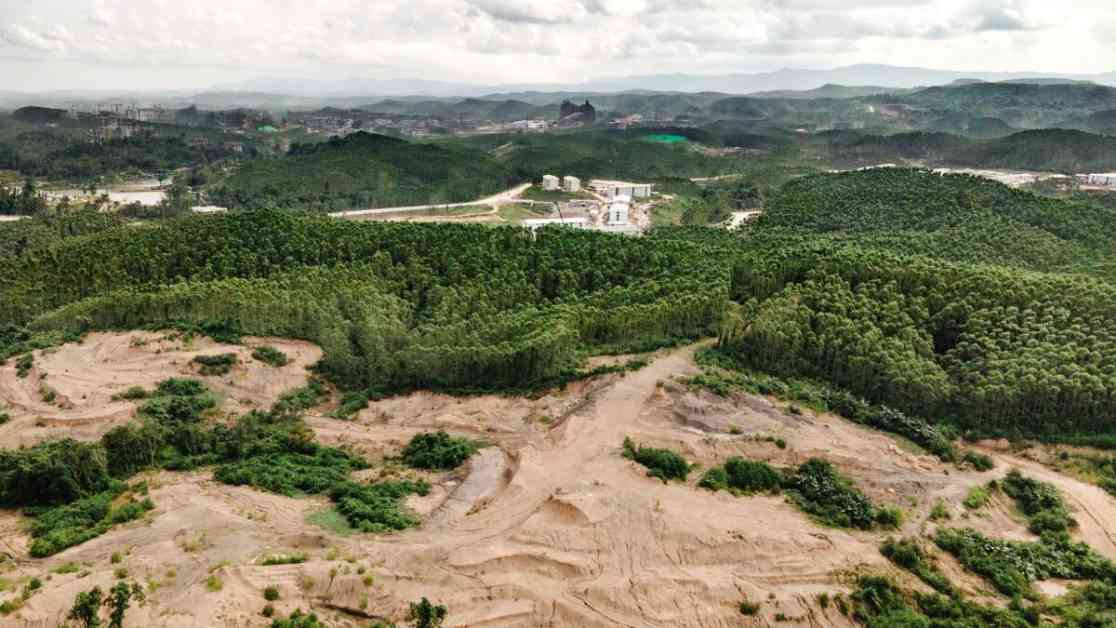NUSANTARA, Indonesia — Jakarta, the bustling capital city of Indonesia, has long been plagued by overcrowding, traffic congestion, air pollution, and water scarcity. To address these issues, the country’s president announced an ambitious plan in 2019 to create a new capital city, Nusantara, located 800 miles away across the Java Sea. The vision for Nusantara was to not only serve as the new seat of government but also as a high-tech, zero-carbon metropolis that would alleviate the population strain on Jakarta and showcase urban innovation to the world.
Construction on Nusantara began two years ago, with the goal of completing significant portions of the city before Indonesia’s Independence Day celebration. However, progress has been slow, with the city currently consisting of dirt roads, unfinished buildings, and the only completed structure being a presidential palace shaped like an eagle.
While the government has not officially set a date for the transition of the capital from Jakarta to Nusantara, President Joko Widodo has already moved into his new office, and the first wave of civil servants is scheduled to arrive in September. The government aims to make Nusantara the new capital as soon as this fall, marking a significant milestone in Indonesia’s history.
The creation of Nusantara is part of a global trend of building new cities to address the challenges of urbanization. According to urban expansion expert Sarah Moser, as many as 200 new cities are being planned or constructed in 50 countries around the world. The success of these new cities hinges on factors such as funding, government support, and location.
In the case of Nusantara, Indonesia has encountered construction delays, funding shortages, and political opposition. The development of the new capital has also raised concerns among local residents, who fear the impact of urbanization on their communities. The project has disrupted ecosystems, altered rivers, and caused social and economic upheaval in surrounding areas.
While the government envisions Nusantara as a model city for the future, challenges remain in ensuring its success and sustainability. The project has faced criticism from environmentalists, indigenous groups, and urban planners who question its long-term viability and impact on local communities.
Subheadings:
Challenges of Urbanization in Jakarta
Environmental and Social Impact of Nusantara’s Development
Economic Considerations and Funding Challenges
The challenges faced in Jakarta, the current capital of Indonesia, highlight the urgent need for a new approach to urban development. With overcrowding, traffic congestion, air pollution, and water scarcity becoming increasingly severe, the creation of Nusantara offers a potential solution to these pressing issues.
The environmental and social impact of Nusantara’s development has raised concerns among environmentalists and indigenous groups. The clearing of thousands of acres of rainforest for the new capital has disrupted ecosystems and threatened the habitats of endangered species such as orangutans and gibbons. Indigenous communities fear the loss of their land and livelihoods as the city expands.
Economic considerations and funding challenges pose significant hurdles to the success of Nusantara. While the government has secured some private funding for the project, the withdrawal of a major investor in 2022 has raised doubts about the city’s financial sustainability. The reliance on corporate funding and the lack of economic activity in the new capital raise questions about its long-term viability.
In conclusion, the development of Nusantara as a new capital city for Indonesia represents a bold and innovative solution to the urban challenges faced by Jakarta. While the project holds promise for addressing overcrowding, traffic congestion, and environmental degradation, significant challenges remain in ensuring its success and sustainability. The government must address the concerns of local communities, environmentalists, and urban planners to create a model city that serves as a beacon of urban innovation for the future.



























